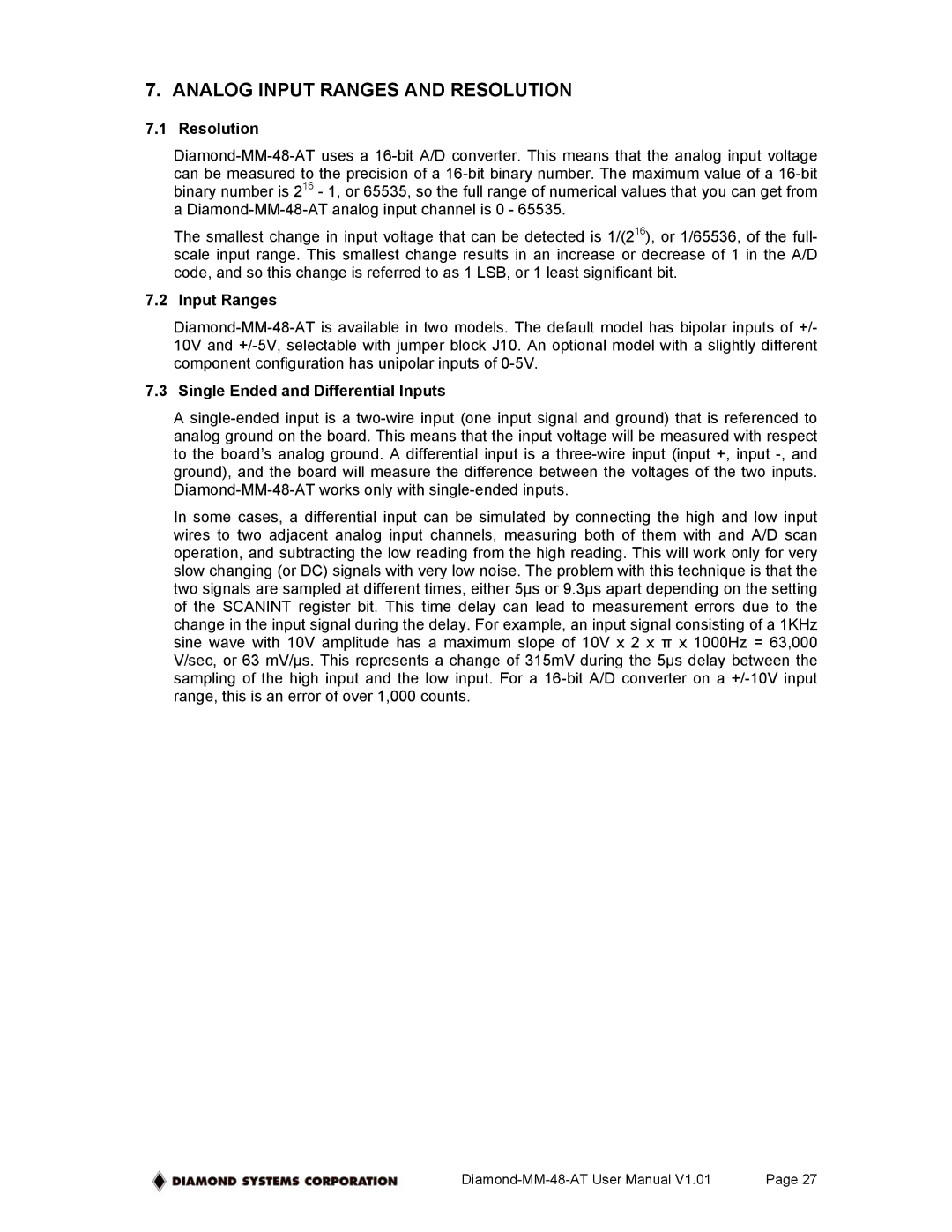7. ANALOG INPUT RANGES AND RESOLUTION
7.1 Resolution
The smallest change in input voltage that can be detected is 1/(216), or 1/65536, of the full- scale input range. This smallest change results in an increase or decrease of 1 in the A/D code, and so this change is referred to as 1 LSB, or 1 least significant bit.
7.2 Input Ranges
7.3 Single Ended and Differential Inputs
A
In some cases, a differential input can be simulated by connecting the high and low input wires to two adjacent analog input channels, measuring both of them with and A/D scan operation, and subtracting the low reading from the high reading. This will work only for very slow changing (or DC) signals with very low noise. The problem with this technique is that the two signals are sampled at different times, either 5µs or 9.3µs apart depending on the setting of the SCANINT register bit. This time delay can lead to measurement errors due to the change in the input signal during the delay. For example, an input signal consisting of a 1KHz sine wave with 10V amplitude has a maximum slope of 10V x 2 x π x 1000Hz = 63,000 V/sec, or 63 mV/µs. This represents a change of 315mV during the 5µs delay between the sampling of the high input and the low input. For a
Page 27 |
